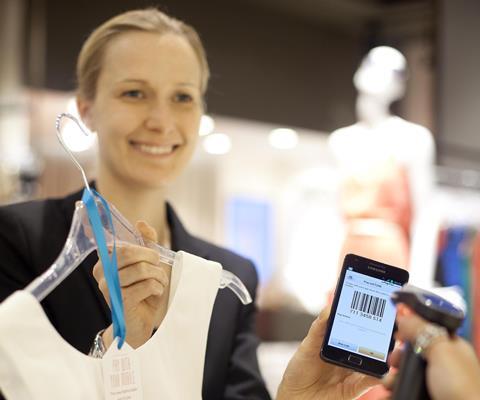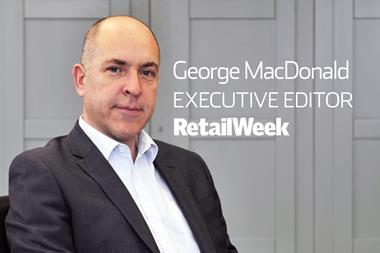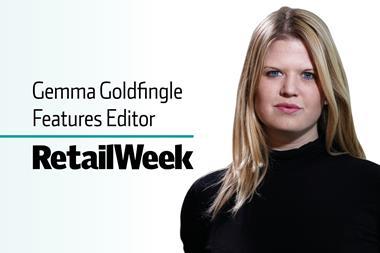Consumers hate queuing and love shopping online, but are still more likely to buy in store, according to research by Adyen on today’s shopper.
For many, a successful shopping experience is one that is over as quickly as possible.
If they can buy something online they will, only visiting shops if they need to try something on.
Queuing is frustrating. They don’t want to spend hours talking to a sales associate. And they are all for in-store tech, if it makes things quicker and easier.
Is this representative of the average British shopper? Well, yes and no.
Adyen surveyed more than 2,000 UK shoppers and 500 retailers to understand what shoppers really want, and identify growth opportunities for retailers. And it uncovered some interesting facts.
The shop is alive and well

Despite the best efforts of doom-mongers, the high street still holds a place in our hearts, with 97% of respondents still shopping in store.
The traditional shop provides an experience impossible to replicate online.
Brands such as beauty specialist Rituals have seized this opportunity, turning their store into a spa-like experience.
Nike’s New York flagship includes a basketball court and H&M’s new Arket store on Regent Street serves coffee.
Online pureplays also recognise the importance of the in-store experience.
“Endless aisles are a great way to free-up costly in-store storage space and eliminate the frustration caused by items being out of stock”
Menswear retailer Bonobos has opened showrooms so shoppers can try on items before ordering online.
Other retailers open additional pop-up shops to build stronger relationships with shoppers.
The Cambridge Satchel Company, for example, grew Black Friday sales by 124% year on year with pop-up shops and endless aisles.
Endless aisles are also a great way to free-up costly in-store storage space and help eliminate the frustration caused by items being out of stock.
IC Group, the company behind sportswear brand Peak Performance, gives shoppers access to its online inventory via iPads operated by sales associates. This has been a huge success, especially for smaller, regional stores.
Consumers are unanimous in their hatred of queuing. More than half named standing in line as their biggest frustration.
So retailers would do well to invest in technology that eliminates queues. One example is mobile point of sale (mPOS) terminals, which enable sales associates to take payment from anywhere on the shop floor.
“Consumers are unanimous in their hatred of queuing. More than half named standing in line as their biggest frustration”
Shoppers like interacting with people in store, but on their own terms.
And their expectations vary depending on the kind of shopper they are.
Some, for example, welcome anything that makes the process faster. For them, the AmazonGo model is ideal, while Amazon Wardrobe potentially eliminates the need to go to a store at all.
Luxury shoppers, on the other hand, expect a personalised service from a dedicated – and knowledgeable – sales associate.
The role of ecommerce
Online shopping is very popular, and consumers love the convenience of having items delivered to their door.
But beware: 73% of shoppers will abandon an online purchase if they believe the delivery cost is too high.
Offering click-and-collect is a good way to eliminate delivery costs without eating into margins.
Despite the popularity of ecommerce in the UK, many retailers still lack confidence in their online experience.
Of large retailers (with 500-plus employees), only 3% rate their ecommerce store as their best shopping experience. This points to huge opportunities for those who get it right.
“Only 3% of large retailers rate their ecommerce store as their best shopping experience”
App usage is growing steadily, with 60% of shoppers stating they have shopped in-app. But here retailers are even more uncertain; less than 4% are satisfied with theirs.
Apps can be tricky. The dominant players are marketplaces such as Asos or Farfetch, who provide beautifully curated apps with a wide selection of brands in one place, making it easy to shop around.
Successful retailer apps focus on building a community and delivering quality content in addition to product listings.

It is still early days for social commerce, but this is likely to develop as more functionality is provided.
Facebook has invested heavily in its chatbot API to make it easy for retailers to process payments from inside Facebook Messenger. So watch this space.
Whether online or in-app, a quick and easy payment experience is crucial.
Some 63% of shoppers want retailers to have their details saved so they can pay more quickly.
This is easily managed via tokenisation, which captures payment data during the first payment and then uses an encrypted token to charge subsequent purchases.
Unified commerce
Every sales channel has its strengths and weaknesses.
The store continues to play a crucial role in the journey, thanks to the sensory experience you just can’t get online.
However, retailers need to sand off those rough edges, such as long queues and intrusive sales associates.
Online provides the ability to shop around and the ultimate convenience of being able to shop from your sofa. Just don’t annoy your shoppers with high delivery costs.
“The real wins are to be had by linking online with in-store and providing a unified experience across both”
Mobile remains a huge growth area, and retailers should focus on optimising the experience for small screens.
Of course, the real wins are to be had by linking online with in-store and providing a unified experience across both.
The key to closing a sale is to ensure your brand remains consistent throughout the shopper journey, and delivers the same level of experience at every touchpoint.
Ultimately, it is important to remember that shoppers connect with brands, not channels, and they want a seamless experience wherever – and however – they choose to interact with you.
Shopping habits revealed
To learn more about the British shopper in 2017, download the full report here.





























No comments yet